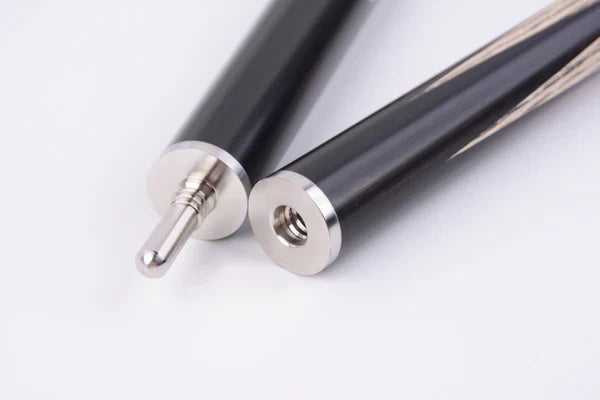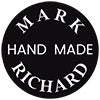
Cue Construction 101: Breaking Down the Different Types of Cue Joints
Walk into any snooker or pool hall on a busy evening and you’ll notice the usual suspects: the chalk dust in the air, players feathering over a long red, and the quiet hush before the satisfying thud of a pot. But there’s one detail often overlooked by casual eyes — the joint of a cue stick.
It’s not as glamorous as a polished ebony butt or as obvious as a gleaming cue tip, yet the joint is the unsung hero of cue construction. Think of it as the hinge in a well-made door. A poor-quality hinge squeaks and rattles, constantly reminding you of its weakness. A good hinge? You don’t even notice it — it works silently, allowing everything else to flow as it should.
In the case of a cue, the joint is the connection point that either makes your billiards cue feel like a natural extension of your arm or makes you second-guess every shot. Whether you're playing in a local friendly or competing in a league match, the cue joint plays a much more important role than most players realize.
This guide divides cue joints into two categories:
- Cue joint types by material and mechanism (brass, alloy, quick-release, wood-to-wood).
- Cue joint types by design and placement (one piece, 3/4 piece, two-piece, multi-joint).
By the end, you'll not only understand the differences but also know which joint best suits your playing style.
Why Cue Joints Matter More Than You Think
When you strike the cue ball, the energy is transferred from your body, through the billiards cue, to the cue tip, and ultimately to the cue ball. The smoothness of this energy transfer depends largely on the cue joint. A poorly fitted joint can erode confidence and make the cue feel loose or rattle. The last thing you want before a long shot is that nagging question: "Will this pool cue hold?"
A solid joint, on the other hand, builds confidence. It makes the cue feel like a piece of wood, stable and reliable. That quiet reassurance can make all the difference in tight frames.
Cue Joints by Material & Mechanism
1. Brass-to-Brass Joint
The traditional choice for many snooker cues. Two solid brass parts screw firmly together with a satisfying “click.” Brass-to-brass joints are strong, durable, and deliver a weighty, stable feel.
- Pros: Classic, robust, and reliable.
- Cons: Heavier than other options; balance shifts slightly towards the center.
2. Brass-to-Alloy Joint
A modern variation that combines brass with alloy. This hybrid design provides a sharper, crisper connection. The alloy keeps the joint secure, while the brass adds a touch of traditional flair.
- Pros: Precise, strong, and wear-resistant.
- Cons: Can feel slightly "cold" compared to the warmer all-brass cue joint.
3. Quick-Release Joint
Made for convenience. Easily connect the cue stick with just a few quick turns, eliminating the need for repeated twisting. Ideal for players who carry their cues to the bar, club, or tournament.
- Pros: Fast, practical, great for players on the go.
- Cons: Fit can vary.
4. Wood-to-Wood Joint
The purist’s choice. With no metal in sight, wood-to-wood joints create a seamless, almost one-piece feel. The hit is softer, more natural, and some players swear it gives more “feedback” through the cue.
- Pros: Lightweight, organic feel, excellent touch.
- Cons: Less durable, more prone to wear over time.
Cue Joints by Design & Placement
The simplest form — no joint at all. A solid stick of ash shaft, typically about 58 inches long. The purest strike and energy transfer, which is why so many professionals prefer them.
- Pros: Smoothest power transfer, consistent feel, and classic look.
- Cons: Lack of portability — long cue cases make it difficult to carry.
The ideal choice for many serious players. The joint sits closer to the cue butt, leaving most of the shaft intact. You still get a feel close to that of a 1 piece cue, but with greater portability.
- Pros: Great balance between feel and practicality; popular among professionals.
- Cons: Slightly less pure than a full one-piece cue; cue cases are still relatively long.
Most popular with recreational and travel players. The snooker cue is split in half down the middle, making it compact and easy to carry. However, there is a slight loss of feel and feedback.
- Pros: Extremely portable, affordable, and readily available.
- Cons: Centre joint interrupts power transfer; feel isn’t as natural.
Multi-Joint Cue
The Swiss Army knife of cues. Designed to break down into several segments, with optional extensions for tight spaces. Great for pubs and home games where space is limited.
- Pros: Maximum adaptability and portability.
- Cons: Multiple cue joints = more interruptions and a greater chance of wear.
How to Choose the Right Cue Joint
Your choice should reflect both your playing style and your lifestyle.
- If you value the purity of feel above all, go for a One Piece or a Wood-to-Wood joint.
- If you want professional-level performance with convenience, a 3/4 joint or brass-to-brass is ideal.
- If you’re often on the move, a Two Piece with a quick-release mechanism could be your best mate.
- If you play in tight spaces or want versatility, a Multi-Joint cue with extension options is worth considering.
Common Mistakes to Avoid
- Buying cheap joints. Low-quality cue sticks can cause wobble, noise, and rapid wear. Always choose a reputable shop.
- Ignoring balance. Some joints add weight in ways that can upset your timing and control.
- Not matching the style to play. Finesse players may hate the “chunkier” feel of heavy brass, while power players might find wood-to-wood too light.
Small Part, Big Difference
The joint may be just a screw and socket, but its impact is massive. It affects not just portability and balance, but also confidence — the hidden advantage in every player’s game.
The best snooker cue is one you don't have to think about. It should disappear in your hand, allowing you to focus entirely on the cue ball in front of you.
So, when choosing your next snooker or English pool cue, don’t just focus on the splices or obsess over tip size. Pay attention to the joint. Because sometimes, the smallest details can make the difference between winning and losing your game.
